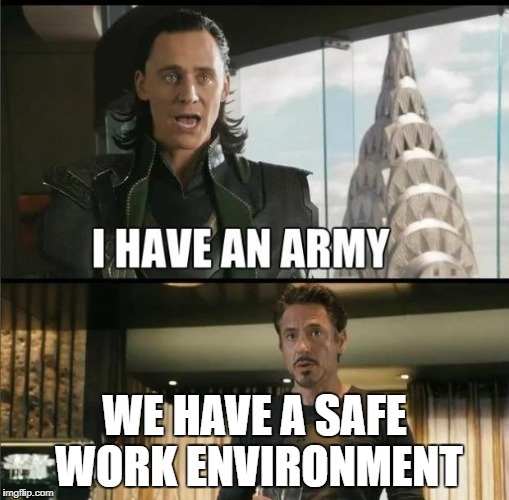| This series of posts is about stress, specifically in agile environments, where it comes from and what to do about it | ||
|---|---|---|
| Part 1 | Part 2 | Part 3 |
 To finalize the series on stress and agile, let’s talk about what we can do to lower distress.
To finalize the series on stress and agile, let’s talk about what we can do to lower distress.
But who are “we”?
Leaders and managers are responsible and accountable for creating a safe work environment, that allows individuals to feel respected and motivated.
We should make it safe to discuss the messy stuff. It maybe uncomfortable, but it beats finding out when everything blows up in our face.
Individuals and interactions
We should respect, empathize and above all create safety. Safety for people to talk freely, without fearing repercussions.
Here are ways to acheive it.
- Leading by example
Part of the safety comes when people start talking. But they won’t, unless they see what happens first to those who do, and this is where leaders come in. They show that it’s ok to talk about stress, and how it affects work and results. They show in action that safety is important to them, the organization and the work. Because it is. Leaders and managers discuss the uncomfortable things, as if they are regular, day-to-day matters, because they are. Addressing stress once a year, is not really addressing it, it is just sweeping it under the rug. We continue to discuss it, and we hammer this message on, and people would respond.
- Listening
In a safe environment, when people start talking, leaders actively listen. This includes one-on-ones, retrospectives and even watercooler talks. When people don’t talk about the issues, leaders ask about them to get their perspective and to do something about it. People who know there’s an open ear will open up.
- Responding
Talking is not enough. People feel distress when they feel they are not in control. Leaders need to give workers more control to solve issues by themselves. Leaders also try to help them when the issues are outside their control. Yes, some things will fall into the “it’s out of our hands” bucket, but they should be the minority.
- Intervening
When we notice something that may compromise safety, we don’t wait. Leaders fix and pre-empt, if possible. We say out loud that some behaviors are not allowed. And if behaviours become patterns- we make sure that those behaviours are not tolerated.
- Monitoring
We need to know how people really feel, and in our context, how they feel about work. Relationship between workers, managers and their peers are important to improve safety. This is not easy to do, because we need to make it safe for people to talk straight (closing the circle with leading by example, listening and responding).
- Educating
As we continue to create and maintain the safe environment, we continue to explain the principles of safety and why it is important for everyone. As new people come into the team and to the organization, we make them feel safe by doing all the above.
Rinse. Repeat.
With safety we lower distress, and create an environment that encourages action, results and creativity. We improve on the organization, team and, of course, on the personal level.
So when people say that “ever since they moved to agile they are more stressed”, it’s time to take a good look at the work environment.
- Does the team work with the product owner or does whatever she says, no arguments?
- What happens if they miss their “estimation”?
- Is there continuous communication between everyone?
Agile does not create distress. It reflects it and shows how safe the environment really is.
That’s a good place to start.